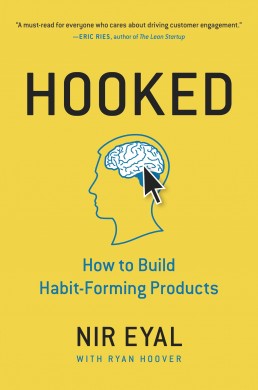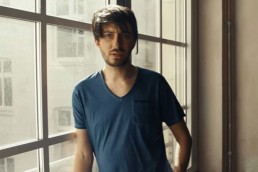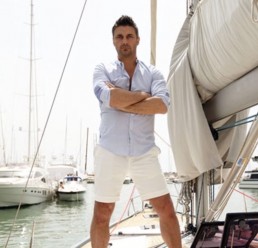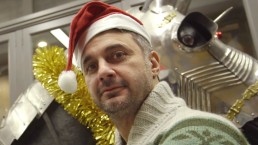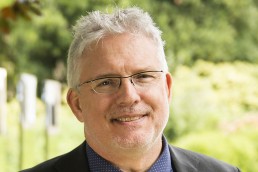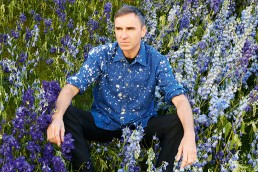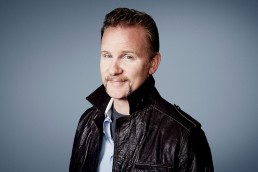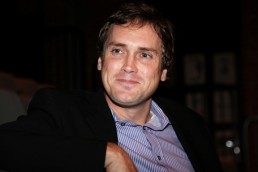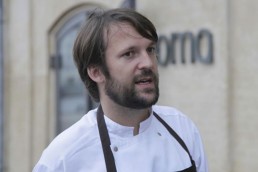Hooked - Why we can't stop using some apps
Nir Eyal makes it clear why we are hooked to some apps.
Behavior Can Be Designed
Nir Eyal: ‘Whether you are designing the behavior change of your consumers or your own habits, you’ll benefit from understanding research I share from behavioral economics, neuroscience, and consumer psychology.’
Addictive Behaviors – Nir Eyal | Inside Quest #28
What makes some technology so habit-forming? | Nir Eyal | TED Institute
How to Build Habit-Forming Products | Nir Eyal @ Startup Grind Global 2017
Jan Böhmermann 'recipe' for a corporate pop hit
Jan Böhmermann shows us how it’s done in Germany. A hit written in 30 minutes and a clip using some original footage of Jim Pandzko (an alter ego of Jan Böhmermann) and a lot of stock images and video. The lyrics have been selected by chimps and are derived from calendars, tweets and other ‘found footage”. It also contains (fake) product placements. The hit is called Menschen, Leben, Tanzen, Welt. (People, Life, Dancing, World)
Posh pawn - Great TV - Great business model
https://www.prestigepawnbrokers.co.uk/posh-pawn-tv-show-channel-4/
Nathan Barley - In 2005 light years ahead
Nathan Barley is a British Channel 4 television sitcom written by Charlie Brooker and Chris Morris, starring Nicholas Burns, Julian Barratt, Claire Keelan, Richard Ayoade, Ben Whishaw, Rhys Thomas and Charlie Condou. The series of six weekly episodes began broadcasting on 11 February 2005 on Channel 4.
"I'm a self-facilitating media node"
Nathan Barley
According to Digital Spy, Nathan Barley was “a flop when it originally aired, but a cult hit on DVD”. It pulled in 700,000 viewers and a 3% share.[4]
The series features a (nowadays) famous cast such as:
- Nicholas Burns – Nathan Barley
- Julian Barratt – Dan Ashcroft
- Claire Keelan – Claire Ashcroft
- Richard Ayoade – Ned Smanks
- Ben Whishaw – Pingu
- Rhys Thomas – Toby
- Noel Fielding – Jones
- Spencer Brown – Rufus Onslatt
- Charlie Condou – Jonatton Yeah?
- David Hoyle – Doug Rocket
- Nina Sosanya – Sasha
- Kevin Eldon – Nikolai the Barber
- Julia Davis – Honda Poppet
- Benedict Cumberbatch – Robin
Nathan Barley, played by Nicholas Burns, is a webmaster, guerrilla filmmaker, screenwriter, DJ and in his own words, a “self-facilitating media node”. Whilst desperate to convince himself and others that he is the epitome of urban cool, Nathan is secretly terrified he might not be, which is why he reads Sugar Ape magazine, his bible of cool.
The website (trashbat.co.ck) consists of stupid pranks caught on camera, photos of him with attractive women and famous figures (some of them digitally edited to insert himself), and photos of him standing on street corners in major cities around the world.
The humour derives from the rapid rise of both the Internet and digital media, and the assumption by publishers and broadcasters that almost any such work is worthy of attention. Barley and his peers are often hired ahead of actual journalists and talented writers trying to make intelligent points, such as the earnest documentary film maker Claire Ashcroft, and her brother Dan Ashcroft, a jaded, opinionated and apathetic hack who, having written an article for Sugar Ape entitled “The Rise of the Idiots”, is appalled to find that “the idiots” in question – Nathan and his contemporaries – have adopted him as their spiritual leader, failing to see that they are the very people he was criticising.

Adam Alter - Irresistible
People have been addicted to substances for thousands of years, but for the past two decades, we’ve also been hooked on technologies, like Instagram, Netflix, Facebook, Fitbit, Twitter, and email—platforms we’ve adopted because we assume they’ll make our lives better. These inventions have profound upsides, but their appeal isn’t an accident. Technology companies and marketers have teams of engineers and researchers devoted to keeping us engaged. They know how to push our buttons, and how to coax us into using their products for hours, days, and weeks on end.
Tracing addiction through history, Alter shows that we’re only just beginning to understand the epidemic of behavioral addiction gripping society. He takes us inside the human brain at the very moment we score points on a smartphone game, or see that someone has liked a photo we’ve posted on Instagram. But more than that, Alter heads the problem off at the pass, letting us know what we can do to step away from the screen. He lays out the options we have to address this problem before it truly consumes us. After all, who among us hasn’t struggled to ignore the ding of a new email, the next episode in a TV series, or the desire to play a game just one more time?
“We live in an age of addiction — seemingly benign and otherwise — and Adam Alter, mixing the latest in behavioral science with briskly engaging storytelling, wakes us to an age-old problem that has found troubling new expression in the era of ubiquitous technology. You may never look at your smartphone in the same way again.”
—Tom Vanderbilt, author of Traffic and You May Also Like

Check out this video to see him talking about the book
The Debunking Handbook, A must read for everyone in business or science
The Debunking Handbook
Stephan Lewandowsky (born 3 June 1958) is an Australian psychologist. He has worked in both the United States and Australia, and is currently based at the University of Bristol, UK, where he is the chair in cognitive psychology at the School of Experimental Psychology.[2] His research, which originally pertained to computer simulations of people’s decision-making processes, has recently focused on the public’s understanding of science and why people often embrace beliefs that are sharply at odds with the scientific evidence.
Get The Debunking Handbook here
The Debunking Handbook
John Cook is the Climate Communication Fellow for the Global Change Institute at The University of Queensland. He created the website Skeptical Science.com, which won the 2011 Australian Museum Eureka Prize for the Advancement of Climate Change Knowledge. In 2015, John was elected as a Fellow of the Committee for Skeptical Inquiry, who are selected for their ‘distinguished contributions to science and scepticism’. John co-authored the college textbook Climate Change Science: A Modern Synthesis and the book Climate Change Denial: Heads in the Sand. He won an award for Best Australian Science Writing for 2014, published by UNSW.
Get The Debunking Handbook here
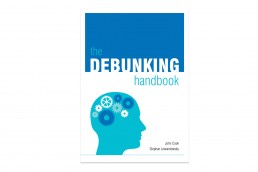
Dior and I - Documentary about Raf Simons first collection at Dior
Dior and I brings the viewer inside the storied world of the Christian Dior fashion house with a privileged, behind-the-scenes look at the creation of Raf Simons’ first haute couture collection as its new artistic director-a true labor of love created by a dedicated group of collaborators. Melding the everyday, pressure-filled components of fashion with mysterious echoes from the iconic brand’s past, the film is also a colorful homage to the seamstresses who serve Simons’ vision.
– Written by The Orchard
'I don't care where she is... I need her now'
Raf Simons
The Dior fashion house
In 1946 Marcel Boussac, a successful entrepreneur known as the richest man in France, invited Dior to design for Philippe et Gaston, a Paris fashion house launched in 1925.[10] Dior refused, wishing to make a fresh start under his own name rather than reviving an old brand.[11] On 8 December 1946, with Boussac’s backing, Dior founded his fashion house. The actual name of the line of his first collection, presented on 12 February 1947,[12] was Corolle (literally the botanical term corolla or circlet of flower petals in English), but the phrase New Look was coined for it by Carmel Snow, the editor-in-chief of Harper’s Bazaar.
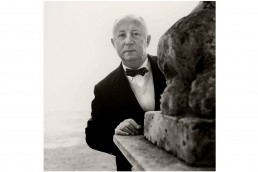
The Greatest Movie Ever Sold - Morgan Spurlock
The Greatest Movie Ever Sold – Morgan Spurlock
A documentary about branding, advertising and product placement that is financed and made possible by brands, advertising and product placement.
Basically it’s post modern art that Marcel Duchamp would have loved.
Tom Vanderbilt - You May Also Like
You may also like, taste in age of endless choice.
Why we like the things we like, why we hate the things we hate, and what our preferences reveal about us.
With a voracious curiosity, Vanderbilt stalks the elusive beast of taste, probing research in psychology, marketing, and neuroscience to answer myriad complex and fascinating questions. Comprehensively researched and singularly insightful, You May Also Like is a joyous intellectual journey that helps us better understand how we perceive, judge, and appreciate the world around us.
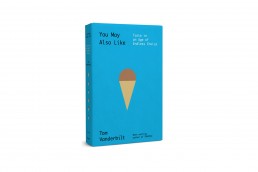
Check out this video to see him talking about the book
Noma - Clever branding by one of the best restaurants in the world
Noma by Rene Redzepi
Check out “A Very Short Film About the Past, Present and Future of Noma” by Rene Redzepi.
Noma is a two-Michelin-star restaurant run by chef René Redzepi in Copenhagen, Denmark. The name is a portmanteau of the two Danish words “nordisk” (Nordic) and “mad” (food).[2] Opened in 2003, the restaurant is known for its reinvention and interpretation of the Nordic Cuisine.[1] In 2010, 2011, 2012 and 2014, it was ranked as the Best Restaurant in the World by Restaurant magazine.[3][4][5]


